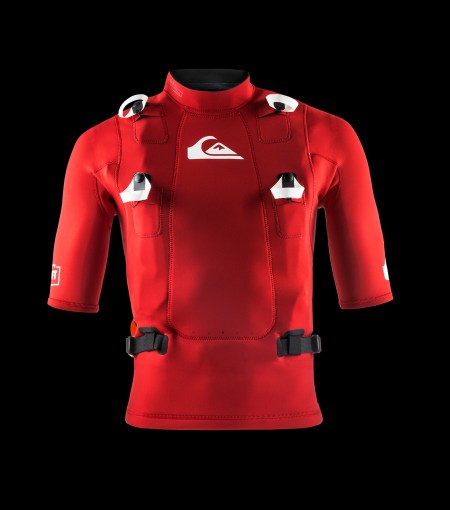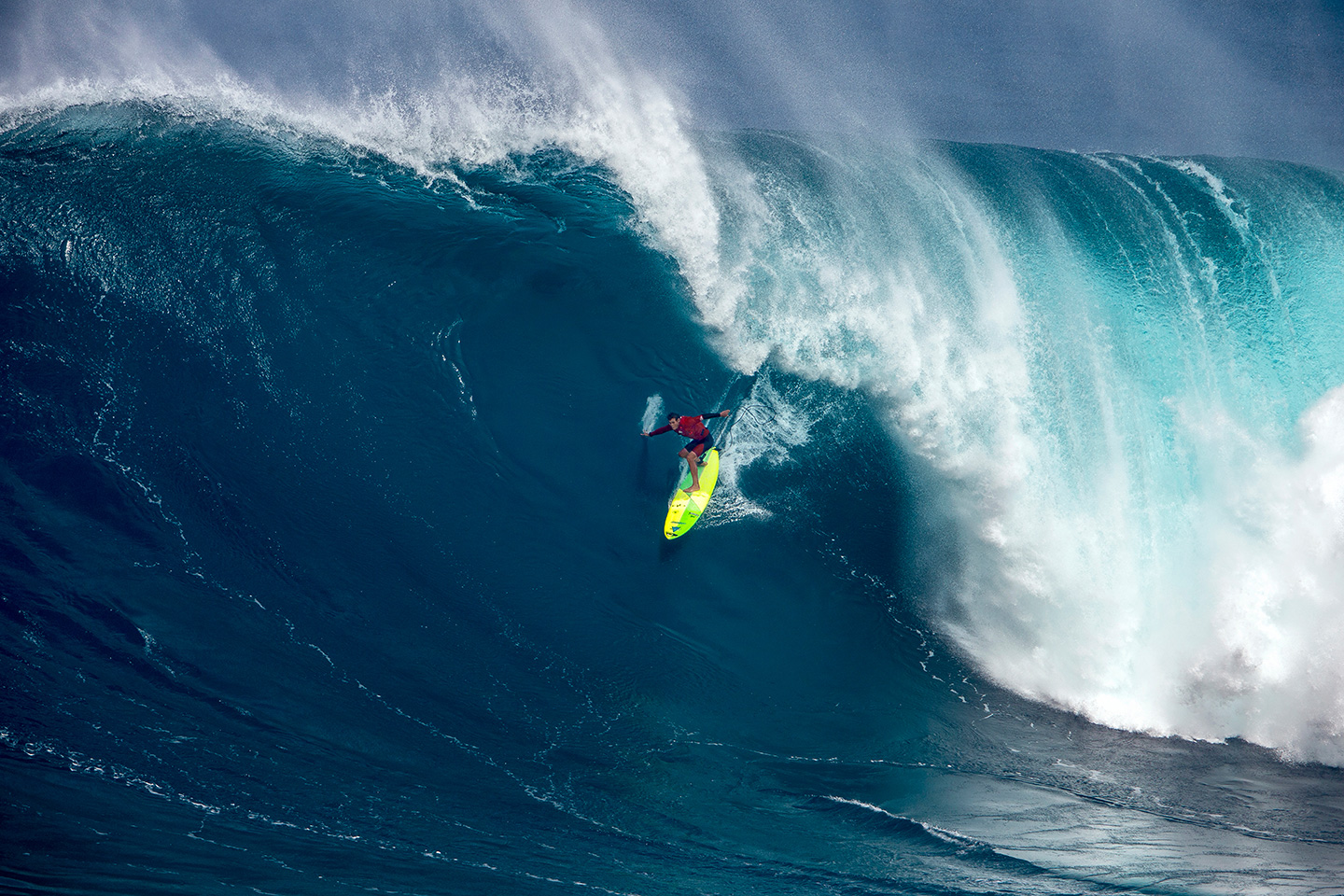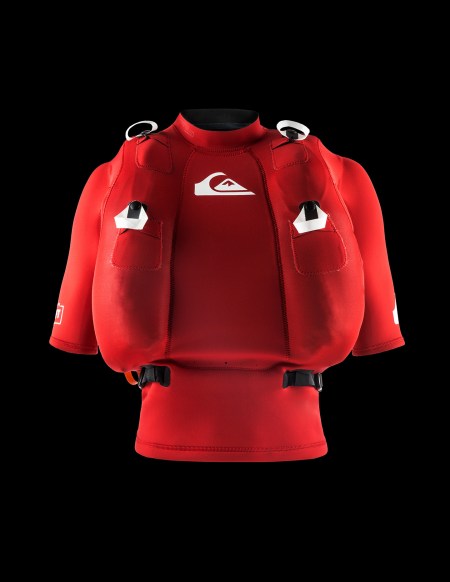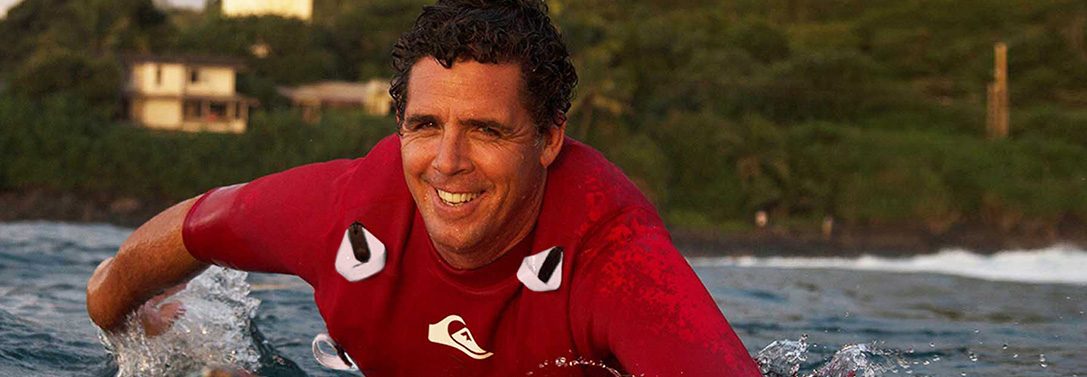If you read RealClearLife’s feature profile of Laird Hamilton, you’ll know that to be a truly successful big-wave surfer, you not only have to be in tip-top physical condition, but you also have to tamp down your fear quotient to about zero. Because, really, what you’re doing is getting towed to the top of a titanic wall of water, with no safety net below, and making a nearly vertical plunge down its face—the only thing between you and it, a surfboard. That board is also what’s between you and potential grave injury, or worse yet, two lungs full of water and a death certificate.
Like Hamilton, 47-year-old Peter Mel has made big-wave surfing his life and garnered legendary status in the tightly knit brotherhood of extreme daredevils. Unlike his blonde-haired peer, though, Mel has left his mark on the surf record books, something the competition-averse Hamilton jettisoned early on in his career. “I thrive in competition,” Mel tells RealClearLife. To that end, he was named Big Wave World Champion in 2012 and Mavericks Champion in 2013, among other top honors (watch his insane run at Mavericks below).
Throughout the years, Mel has been privy to some fairly scary situations that befall even the best-of-the-best. He cites one specific situation in the ’90s at Mavericks—a popular Northern California surf haunt—where he came close to losing it all. “I had a wipeout, and I remember being held down for long periods of time, and then as my energy was subsiding, I actually got sucked into another ledge (or hole), because the bottom of the ocean at Mavericks is very uneven,” remembers Mel. Instead of freaking out—as most of us would do, enveloped by a layer-cake of water—he says that he had an epiphany, realizing that he was “going to be down here for a little bit longer” and feeling a sense of calm and relaxation come over his body. Another wave rolled over the top of him before he was able to surface. He estimates that he was underwater for 40 seconds.
Twenty years later—and all underwater epiphanies aside—Mel wants to make sure situations like that one become a rarity for big-wave riders. To that end, he and his sponsor Quiksilver, along with legendary aquatics innovator Aqua Lung (founded by Jacques Cousteau), are set to launch a soon-to-be-essential piece of surfing equipment that could revolutionize big-wave surfing—and more importantly, save lives. Today, Quiksilver is unveiling its Highline Airlift vest, which will go on sale for $990 at select stores on Oct. 14 in the U.S. and Hawaii, Europe, and Australia.

The chrysalis of the Airlift concept can be traced back to Mel’s friend and fellow big-wave surfing fanatic, Shane Dorian, who had a less-than-enjoyable experience at Mavericks, too. Dorian wiped out and found himself dangerously deep à la Mel in the ’90s. He would later tell his friend that he blacked out—but came to just in time to surface and thankfully, be saved. On the plane ride home, rattled, “a light bulb went off,” remembers Mel. What if big-wave surfers could have a tricked-out version of the life vest that passengers have under their seats? You know, the one that you pull the tabs on the sides to inflate or blow up manually via that little tube?
Soon after, a brainstorming session ensued, and Quiksilver quickly put together a dream team to work on a prototype. Its team consisted of Mel; his partner in crime and fellow big-wave surfer Jamie Mitchell; their head of R&D, Peyo Lizarazu, who’s also a big-wave rider and swimmer; and Mel Puu, a Hawaiian lifeguard, who was a surf rescue legend.

Aqua Lung’s head of R&D Eric Thorstenson was in on the fun as well, and executed on a wishlist that included everything from extreme durability and the integration of compressed air cartridges to built-in GPS, the latter of which didn’t make the Airlift’s final cut but could turn up in version 2.0, says Mel. “Even the very first [prototype] that I had,” says Mel, “was better than anything I’d ever experienced before.”
The Airlift isn’t like the life vest you strap on in the back of a yacht. It’s being worn by someone who’s riding a wave that’s, at minimum, 20 feet high, so it needs to fit snugly against a wetsuit or bare skin, so that it doesn’t get in the way of the sport at hand. Mel explains that he barely ever has any inflation in his vest while he’s big-wave surfing, because it would prevent him from swimming under waves. Other surfers, he says, like to keep a little bit of air in their vests, so if they were knocked unconscious on the way down or through a wave, they could potentially bob up to the surface to be saved. But even that’s not a sure thing.

The finished Airliftlooks like a normal wetsuit top. But pull the white tabs, situated to the right and left of each armpit, and the two sections, running from the shoulders to about the waist, inflate. Like an airplane’s under-the-seat life vest, you can also simply blow into a tube on the vest to give yourself however much buoyancy you’re comfortable with. But maybe the coolest, most James Bond–like feature is the Airlift’s back pocket, which contains four mounted, compressed-air cartridges, which can be deployed underwater and inflate the vest entirely. “Literally, you turn into a beach ball and float to the surface,” says Mel.
Even before bringing the Airlift to market, Mel says Quiksilver and Aqua Lung already had their sights set on 2.0 and beyond—potentially, bringing to market a computerized vest that would auto-deploy underwater if it sensed a change in pressurization. And of course, there’s also that GPS. “Everywhere we go in big waves, it’s a very big playing field,” explains Mel. “So if you could have a beacon where you could find a surfer if you need to, that would be a key safety issue.”
In recent years, professional sports have been on a safety innovation kick, as the National Football League and Major League Baseball both deal head-on with a concussion crisis. The reality of the matter is that better equipment saves lives. Donning an Airlift, says Mel, doesn’t strip you of your training or experience; it simply makes safety a higher priority.
Whether you’re looking to get into shape, or just get out of a funk, The Charge has got you covered. Sign up for our new wellness newsletter today.
























